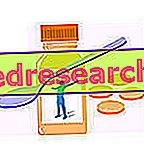Pregnancy
Pregnancy is a special physiological condition, which requires more care and attention than the norm.
The safety of the unborn child depends above all on the correct gravidary course and, in this sense, the mother's diet is an essential factor to say the least.

mushrooms
Mushroom disputes
Mushrooms are organisms that are part of a biological realm in their own right, which includes both mushrooms with the "classical form" (fruiting bodies, fleshy, a mycelium buried or undermined in dead / living plant tissues), but also molds and yeasts. All mushrooms have two characteristics:
- They reproduce by spores
- They try to defend themselves by releasing toxins.
Note : to minimize food poisoning from harmful fungi it is ESSENTIAL to source from safe, guaranteed and certified sources. It is better to avoid the collection in the absence of adequate training and the purchase under the table by unauthorized persons.
In this regard, two other considerations must be made:
- Not all toxins are harmful to humans, otherwise there would be no edible / edible mushrooms
- The toxicity of toxins varies mainly depending on the chemical nature and the dose (venom potential). For example, honey mushrooms are said to become "objectively" edible only after cooking by boiling (eliminating the remaining water). Other fungi increase the concentration of unwanted molecules progressively with maturation; this is the case of some kinds of covers (for example the C. comatus ), which become inedible at the opening of the hat. In these cases, however, one must also ask whether, in conditions of greater individual susceptibility (such as pregnancy, liver and kidney diseases, etc.), it is worth trying to eat them, risking to introduce many toxins and in any case inevitably assuming a small concentration.
Mushrooms are organisms that are particularly affected by environmental conditions. After the famous Chernobyl disaster, an abnormal growth of the fungi was noted, which tend to absorb the surrounding radiation. Moreover, those in the wild are a real "reservoir" of pesticides (insecticides, herbicides, etc.) and pollutants (such as the lining, lead, etc.). For this reason, the fundamental rule of NOT picking mushrooms in potentially contaminated places is always valid.
Mushrooms in the diet
Mushrooms have similar nutritional characteristics, in some ways, to those of vegetables, but they also have properties similar to those of foods of animal origin.
They have an excellent supply of fiber, contain useful minerals (such as potassium, phosphorus and zinc) and vitamins, of which the most interesting is D, rare in most foods and essential for bone metabolism.
Raw or cooked, fresh or preserved, mushrooms are widespread in kitchens around the world. They are a useful ingredient in the preparation of appetizers, first and second courses.
Yes, no mushrooms or not?
Mushrooms yes
Some nutritionists believe that mushrooms, preferably picked and fresh, are foods of great value, to be used raw in salads and on pizza, stewed in soups, sautéed in first courses and as a side dish.
There is no medical recommendation that clearly supports the harmfulness of edible fungi in pregnancy. These foods can contribute to the growth and development of the fetus, especially by virtue of the vitamin D content, but also of proteins, minerals and other vitamins (especially water-soluble in group B).
The richness in vitamin D, which varies according to the species, is particularly useful in the diet of the vegetarian woman in pregnancy. In fact, this fat-soluble nutrient tends to be deficient in all diets that exclude foods of animal origin (of which the major exponents are fish, liver and egg yolk). It must however be acknowledged that, in the presence of adequate sun exposure, the human body does not require the introduction of large quantities of vitamin D; therefore, it is advisable to increase the intake especially in winter.
For vegan women the concentration of proteins can also be considered useful, although, based on what is shown in the tables on nutritional composition, most of the nitrogen contained in the mushrooms is of an NON-protein nature. The presence of fibers and probiotics is discrete, which can improve the intestinal condition (constipation due to anatomical alteration) often compromised during pregnancy.
Mushrooms no
Most concerns about the consumption of fungi in pregnancy, and beyond, concern:
- The biological species, which defines its poisonous potential
- The condition of the growth environment.
In pregnancy they are absolutely, and obviously, to avoid poisonous, toxic mushrooms (including hallucinogens containing psilocybin), those inedible, questionably edible, edible that have passed the point of maturation and, in general, those of doubtful healthiness. It may be advisable to subject them to cooking, given the thermolabile properties of some protein toxins (ie that degrade with heat). Note : Psilocybin is a chemical that alters the brain activity of those who take it and interferes with the growth of the fetus.
Of doubtful healthiness, the so-called "miraculous mushrooms" (medicines), often used as food supplements but not always considered safe for the fetus (shiitake, maitake, reishi etc.), must be excluded from the diet during pregnancy.
In order to have the maximum guarantee on the wholesomeness of mushrooms, it is necessary to choose the right sources of supply. Alternative routes such as autonomous collection and purchase by unauthorized individuals should be excluded.
In Italy very dangerous mushrooms grow very similar to other edible and valuable mushrooms. Some examples are: Amanita verna and A. ovoidea, harmful and similar to the most common edible field mushrooms. Boletus satanas, called malefic porcino, is toxic and can be confused with edible porcini. Omphalotus olearius, toxic and similar to common chanterelles or chanterelles.
Cultivated mushrooms, by any means, also prevent any contamination from contamination. In fact, many of these foods can be picked up at the edge of the road, where they are subjected to accumulation of ferodo, lead, etc., or in conventional orchards, especially very old ones, where for decades they have been used (or still are) of extremely harmful products.
In pregnancy it is always advisable to wash and cook the mushrooms, both to reduce the microbiological risk, and (as we have already said) to decrease the toxic type.
We conclude by emphasizing that, as with many other foods and nutrients, also in this case the portion plays a fundamental role. In pregnancy it is necessary to limit the intake of mushrooms to a one-off, avoiding a multiple weekly frequency, possibly in portions less than or equal to 100-200 g.



